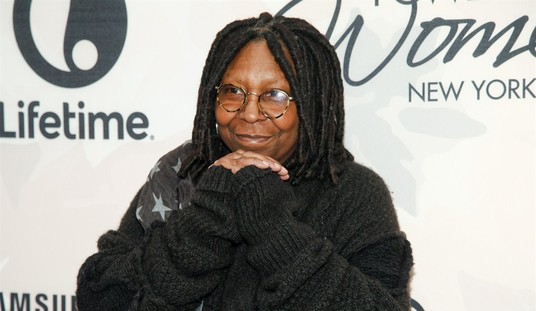In the Ottawa Citizen, John Robson runs down a brief history of the left’s more toxic statements over the years:
The irony in commentary about toxic American political rhetoric after Arizona congresswoman Gabrielle Giffords was shot is how toxic the commentary is. If the American right really had a particular penchant for murderous language and ideas it would be important to say it. But it’s just not true.
In one sense it doesn’t matter because the suspect, Jared Lee Loughner, appears to be insane. But if we are going there, let’s go the full distance: He appears to be an atheist Nietzschean enthusiast for the Communist Manifesto whose obsession with language resembles the PC fixation on “privileged discourse.” So let’s try to stick to the facts.
On Monday’s Citizen front page Andrew Cohen wrote “the Tea Party, as agents of a contagion of right-wing extremism in the United States, have helped create a climate of paranoia that has alarmed observers. … The political discourse has been seriously deteriorating since the presidential campaign of 2008. … Anxiety and fear are not new in the United States. Richard Hofstadter identified these undercurrents in a provocative essay called ‘The Paranoid Style in American Politics.’ ” Yes. And as a good progressive, Hofstadter pinned it on the right. I’m not sure American political paranoia is a problem compared to, say, the Middle East with its Mossad sharks and vultures. But I do know alarming rhetoric in the U.S. comes mostly from the left.
Remember “Burn, baby, burn” in the 1960s, or Jeremiah Wright, or Susan Sontag calling the white race “the cancer of history” to general applause in the salons? Amerika and The Anarchist Cookbook and radical chic and hijackings to Cuba? The New York Times lionizing Castro in the early 1960s as they had Stalin in the early 1930s? Thomas Jefferson writing in 1793 that rather than see Robespierre’s revolution fail “I would have seen half the earth desolated”? Or seventh president and Democratic icon Andrew Jackson saying on his deathbed his only two regrets were “That I didn’t shoot Henry Clay and hang John C. Calhoun”?
Hey, it’s not easy to Start From Zero, assume that world began in 1789, 1917, or 1968, junking millenia of collected wisdom along the way, and expect to stay rational in the process.
Daniel Henninger of the Wall Street Journal explains “Why the Left Lost It” this past week:
Only 24 months after Barack Obama’s own historic election and a rising Democratic tide, the country flipped. Not just control of the U.S. House, but deep in the body politic. Republicans now control more state legislative seats than any time since 1928.
What elevated this transfer of power to historic status is that it came atop the birth of a genuine reform movement, the tea parties. Most of the time, election results are the product of complex and changeable sentiments or the candidates’ personalities. What both sides fear most is a genuine movement with focused goals.
The tea party itself got help from history—the arrival of a clarifying event, the sovereign debt crisis of 2010. Simultaneously in the capitals of Europe, California, New York, New Jersey, Illinois and elsewhere it was revealed that fiscal commitments made across decades, often for liberally inspired social goals, had put all these states into a condition of effective bankruptcy.
This stark reality unnerved many Americans. The tea partiers’ fiscal concerns were real. Despite that, a progressive Democratic president and congressional leadership spent 2009 and 2010 passing the biggest economic entitlement since 1965 and driving U.S. spending to 25%, or $3.5 trillion, of the nation’s $14 trillion GDP. A public claim of that size hasn’t been seen since World War II.
They expected to take losses in November. What they got instead was Armageddon. Suddenly an authentic reform movement, linked to the Republican Party, whose goal simply is to stop the public spending curve, had come to life. This poses a mortal threat to the financial oxygen in the economic ecosystem that the public wing of the Democratic Party has inhabited all these years.
The stakes for the American left in 2012 couldn’t possibly be higher. If then, and again in 2014, progressives can’t pull toward their candidates some percentage of the independent voters who in November abandoned the Democratic Party, they could be looking in from the outside for as many years as some of them have left to write about politics. A wilderness is a terrible place to be.
Against that grim result, every sentence Messrs. Krugman, Packer, Alter, the Times and the rest have written about Tucson is logical and understandable. What happened in November has to be stopped, by whatever means become available. Available this week was a chance to make some independents wonder if the tea parties, Sarah Palin, Rush Limbaugh, Glenn Beck and Jared Loughner are all part of the same dark force.
Who believes this? They do.
Read the whole thing — and remember, if the left seems even more unhinged than usual (those with stronger stomachs can scroll through the comment section of this post from yesterday for a taste), it’s not personal, Sonny; it’s strictly business. Big business, these days.
Related: “Back in the 1960s, who’d have imagined that a septuagenarian white sheriff from Arizona with a hostility to free speech would one day become a hero to the left?”










Join the conversation as a VIP Member